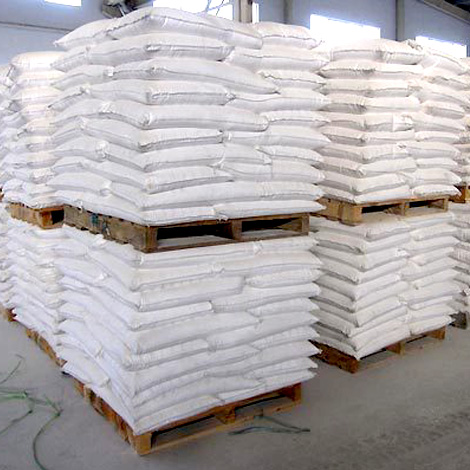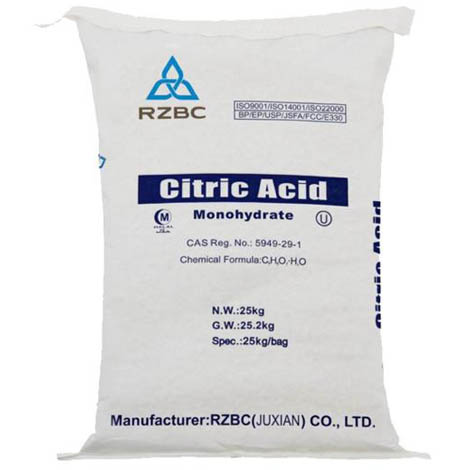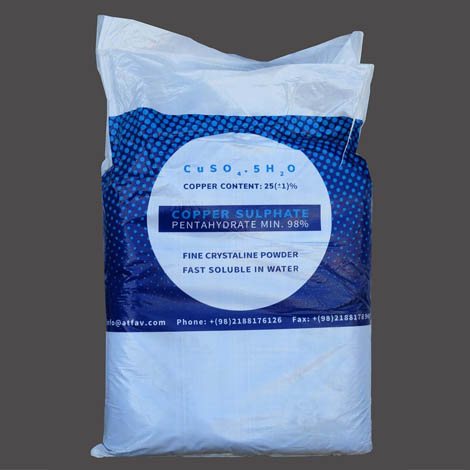Calcium carbonate
Calcium carbonate is a chemical compound with the formula CaCO3. It is a common substance found in rocks as the minerals calcite and aragonite (most notably as limestone, which is a type of sedimentary rock consisting mainly of calcite) and is the main component of pearls and the shells of marine organisms, snails, and eggs. Calcium carbonate is the active ingredient in agricultural lime and is created when calcium ions in hard water react with carbonate ions to create limescale. It is medicinally used as a calcium supplement or as an antacid, but excessive consumption can be hazardous and cause poor digestion.
Calcium chloride
Calcium chloride is an inorganic compound, a salt with the chemical formula CaCl2. It is a white coloured crystalline solid at room temperature, and it is highly soluble in water. It can be created by neutralising hydrochloric acid with calcium hydroxide.
Calcium chloride is commonly encountered as a hydrated solid with generic formula CaCl2(H2O)x, where x = 0, 1, 2, 4, and 6. These compounds are mainly used for de-icing and dust control. Because the anhydrous salt is hygroscopic, it is used as a desiccant.
By depressing the freezing point of water, calcium chloride is used to prevent ice formation and is used to de-ice. This application consumes the greatest amount of calcium chloride. Calcium chloride is relatively harmless to plants and soil. As a deicing agent, it is much more effective at lower temperatures than sodium chloride. When distributed for this use, it usually takes the form of small, white spheres a few millimeters in diameter, called prills. Solutions of calcium chloride can prevent freezing at temperatures as low as −52 °C (−62 °F), making it ideal for filling agricultural implement tires as a liquid ballast, aiding traction in cold climates.
It is also used in domestic and industrial chemical air dehumidifiers.
Calcium hydroxide
Calcium hydroxide (traditionally called slaked lime) is an inorganic compound with the chemical formula Ca(OH)2. It is a colorless crystal or white powder and is produced when quicklime (calcium oxide) is mixed, or slaked with water. It has many names including hydrated lime, caustic lime, builders' lime, slack lime, cal, or pickling lime. Calcium hydroxide is used in many applications, including food preparation, where it has been identified as E number E526. Limewater is the common name for a saturated solution of calcium hydroxide.
Uses
One significant application of calcium hydroxide is as a flocculant, in water and sewage treatment. It forms a fluffy charged solid that aids in the removal of smaller particles from water, resulting in a clearer product. This application is enabled by the low cost and low toxicity of calcium hydroxide. It is also used in fresh water treatment for raising the pH of the water so that pipes will not corrode where the base water is acidic, because it is self-regulating and does not raise the pH too much.
It is also used in the preparation of ammonia gas (NH3), using the following reaction:
- Ca(OH)2 + 2NH4Cl → 2NH3 + CaCl2 + 2H2O
Calcium hypochlorite Esfahan 45 kg
Calcium oxychlorides
A confusion sometimes reigns between calcium oxychlorides and calcium hypochlorite. Indeed, the name calcium oxychloride (or calcium hydroxychloride) does not immediately refer to calcium hypochlorite, but is only applicable to the mixed calcium basic chloride compounds remaining unreacted in the bleaching powder, such as, e.g. CaCl2 · 2 Ca(OH)2.
Calcium oxychloride may also be formed in concrete in roads and bridges when calcium chloride is used as deicing agent during winter. Calcium chloride then reacts with calcium hydroxide (portlandite) present in cement hydration products and forms a deleterious expanding phase also named CAOXY (abbreviation for calcium oxychloride) by concrete technologists. The stress induced into concrete by crystallisation pressure and CAOXY salt expansion can considerably reduce the strength of concrete.
Chemical properties
Calcium hypochlorite exhibits both acido-basic and oxydo-reduction properties. It is a relatively strong base.
Calcium hypochlorite solution is basic as the hypochlorite anion can accept a proton from a water molecule leaving a hydroxyُl anion in solution. This basicity is due to the propensity for the hypochlorite anion to accept a proton to become hypochlorous acid, a weak acid:
- ClO− + H2O ↔ HClO + OH−
The hypochlorite anion is also a strong oxidizing agent containing a chlorine atom at the valence I (redox state: Cl+1) which reacts under acidic conditions with the reduced chloride species (Cl–, here the reducing agent) present in hydrochloric acid to form calcium chloride, water and gaseous chlorine. The overall reaction is:
- Ca(ClO)2 + 4 HCl → CaCl2 + 2 H2O + 2 Cl2
Calcium hypochlorite Indian 45 kg
Calcium oxychlorides
A confusion sometimes reigns between calcium oxychlorides and calcium hypochlorite. Indeed, the name calcium oxychloride (or calcium hydroxychloride) does not immediately refer to calcium hypochlorite, but is only applicable to the mixed calcium basic chloride compounds remaining unreacted in the bleaching powder, such as, e.g. CaCl2 · 2 Ca(OH)2.
Calcium oxychloride may also be formed in concrete in roads and bridges when calcium chloride is used as deicing agent during winter. Calcium chloride then reacts with calcium hydroxide (portlandite) present in cement hydration products and forms a deleterious expanding phase also named CAOXY (abbreviation for calcium oxychloride) by concrete technologists. The stress induced into concrete by crystallisation pressure and CAOXY salt expansion can considerably reduce the strength of concrete.
Chemical properties
Calcium hypochlorite exhibits both acido-basic and oxydo-reduction properties. It is a relatively strong base.
Calcium hypochlorite solution is basic as the hypochlorite anion can accept a proton from a water molecule leaving a hydroxyُl anion in solution. This basicity is due to the propensity for the hypochlorite anion to accept a proton to become hypochlorous acid, a weak acid:
- ClO− + H2O ↔ HClO + OH−
The hypochlorite anion is also a strong oxidizing agent containing a chlorine atom at the valence I (redox state: Cl+1) which reacts under acidic conditions with the reduced chloride species (Cl–, here the reducing agent) present in hydrochloric acid to form calcium chloride, water and gaseous chlorine. The overall reaction is:
- Ca(ClO)2 + 4 HCl → CaCl2 + 2 H2O + 2 Cl2
Calcium Hypochlorite Semnan
Calcium hypochlorite is an inorganic compound with formula Ca(ClO)2. It is the main active ingredient of commercial products called bleaching powder, chlorine powder, or chlorinated lime, used for water treatment and as a bleaching agent. This compound is relatively stable and has greater available chlorine than sodium hypochlorite (liquid bleach). It is a white solid, although commercial samples appear yellow. It strongly smells of chlorine, owing to its slow decomposition in moist air. It is not highly soluble in hard water, and is more preferably used in soft to medium-hard water. It has two forms: dry (anhydrous); and hydrated (hydrous).
Uses
Sanitation
Calcium hypochlorite is commonly used to sanitize public swimming pools and disinfect drinking water. Generally the commercial substances are sold with a purity of 65% to 73% with other chemicals present, such as calcium chloride and calcium carbonate, resulting from the manufacturing process. As a swimming pool chemical, it is blended with other chemicals less often than other forms of chlorine, due to dangerous reactions with some common pool chemicals. In solution, calcium hypochlorite could be used as a general purpose sanitizer, but due to calcium residue, sodium hypochlorite (bleach) is usually preferred.
Chlorine Tablets
Chlorine Tablets are thicker than other pool chlorine tablets, allowing them to dissolve slower and protect your pool water for longer. Moreover, 3 inch chlorine tablets are the ideal size for your floaters or automatic feeders. These industry-leading chlorine tabs have 90% available stabilized chlorine for long lasting sanitizing power. floaters or automatic feeders. These industry-leading chlorine tabs have 90% available stabilized chlorine for long lasting sanitizing power.
How to use chlorine tablets:
Add 1-2 chlorine tablets to every 10,000 gallons of pool water.
For best results, we recommend testing the chlorine level once per week.
Increase dosage after heavy use, rain or warm temperatures.
Citric acid
Citric acid It occurs naturally in citrus fruits. In biochemistry, it is an intermediate in the citric acid cycle, which occurs in the metabolism of all aerobic organisms.
More than two million tons of citric acid are manufactured every year. It is used widely as an acidifier, as a flavoring and a chelating agent.
A citrate is a derivative of citric acid; that is, the salts, esters, and the polyatomic anion found in solution. An example of the former, a salt is trisodium citrate; an ester is triethyl citrate. When part of a salt
Copper(II) sulfate
Copper(II) sulfate, also known as copper sulphate, are the inorganic compounds with the chemical formula CuSO4(H2O)x, where x can range from 0 to 5. The pentahydrate (x = 5) is the most common form. Older names for this compound include blue vitriol, bluestone,vitriol of copper, and Roman vitriol.
The pentahydrate (CuSO4·5H2O), the most commonly encountered salt, is bright blue. It exothermically dissolves in water to give the aquo complex [Cu(H2O)6]2+, which has octahedral molecular geometry. The structure of the solid pentahydrate reveals a polymeric structure wherein copper is again octahedral but bound to four water ligands. The Cu(II)(H2O)4 centers are interconnected by sulfate anions to form chains. Anhydrous copper sulfate is a light grey powder.
Diammonium phosphate
Diammonium phosphate (DAP) (chemical formula (NH4)2HPO4, IUPAC name diammonium hydrogen phosphate) is one of a series of water-soluble ammonium phosphate salts that can be produced when ammonia reacts with phosphoric acid. Solid diammonium phosphate shows a dissociation pressure of ammonia as given by the following expression and equation:
{\displaystyle {\ce {(NH4)2HPO4(s) <=> NH3(g) + NH4H2PO4(s)}}}
At 100 °C, the dissociation pressure of diammonium phosphate is approximately 5 mmHg.
According to the diammonium phosphate MSDS from CF Industries, Inc., decomposition starts as low as 70°C.
"Hazardous Decomposition Products: Gradually loses ammonia when exposed to air at room temperature. Decomposes to ammonia and monoammonium phosphate at around 70°C (158°F). At 155°C (311°F), DAP emits phosphorus oxides, nitrogen oxides and ammonia."
Diatomaceous earth
Diatomaceous earth, diatomite or kieselgur/kieselguhr is a naturally occurring, soft, siliceous sedimentary rock that is easily crumbled into a fine white to off-white powder. It has a particle size ranging from less than 3 μm to more than 1 mm, but typically 10 to 200 μm. Depending on the granularity, this powder can have an abrasive feel, similar to pumice powder, and has a low density as a result of its high porosity. The typical chemical composition of oven-dried diatomaceous earth is 80–90% silica, with 2–4% alumina (attributed mostly to clay minerals) and 0.5–2% iron oxide.
Diatomaceous earth consists of fossilized remains of diatoms, a type of hard-shelled protist. It is used as a filtration aid, mild abrasive in products including metal polishes and toothpaste, mechanical insecticide, absorbent for liquids, matting agent for coatings, reinforcing filler in plastics and rubber, anti-block in plastic films, porous support for chemical catalysts, cat litter, activator in blood clotting studies, a stabilizing component of dynamite, a thermal insulator, and a soil for potted plants and trees like bonsai.
Dishwashing Liquid 10 and 20 liters
Dishwashing liquid (BrE: washing-up liquid), known as dishwashing soap, dish detergent and dish soap, is a detergent used to assist in dishwashing. It is usually a highly-foaming mixture of surfactants with low skin irritation, and is primarily used for hand washing of glasses, plates, cutlery, and cooking utensils in a sink or bowl. In addition to its primary use, dishwashing liquid also has various informal applications, such as for creating bubbles, clothes washing and cleaning oil-affected birds.
Dishwashing detergents for dishwashers are manufactured and marketed variously as cartridges, gel, liquids, pacs, powder, and tablets. Any dishwashing liquid may contain bleach, enzymes, or rinsing aids. Some dishwashing detergents may be homemade, using ingredients such as borax, essential oil, eucalyptus oil and grated bar soap, among others.
Dishwashing detergents can be formulated to work under different circumstances. In some cases suitably formulated they can be used with cold water or sea water, although they will not generally work as well as those intended for, and used with, hot water.


















